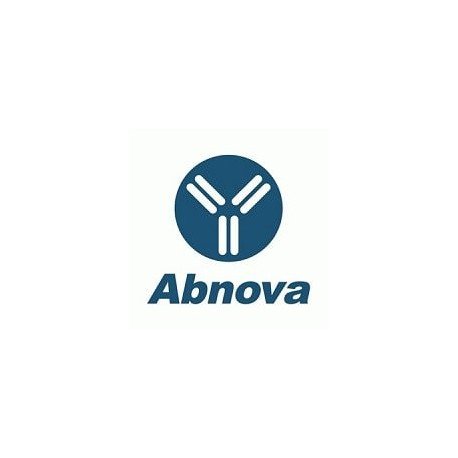Cart 0 Product Products (empty)
No products
To be determined Shipping
0,00 € Total
Prices are tax excluded
Product successfully added to your shopping cart
Quantity
Total
There are 0 items in your cart. There is 1 item in your cart.
Total products (tax excl.)
Total shipping (tax excl.) To be determined
Total (tax excl.)
Data sheet of RAD9 (phospho S1260) polyclonal antibody
| Brand | Abnova |
| Product type | Primary antibodies |
| Reactivity | Yeast |
| Host species | Rabbit |
| Applications | ELISA,WB-Re |
More info about RAD9 (phospho S1260) polyclonal antibody
| Brand: | Abnova |
| Reference: | PAB11310 |
| Product name: | RAD9 (phospho S1260) polyclonal antibody |
| Product description: | Rabbit polyclonal antibody raised against synthetic phosphopeptide of RAD9. |
| Gene id: | 851803 |
| Gene name: | RAD9 |
| Gene alias: | - |
| Gene description: | DNA damage-dependent checkpoint protein, required for cell-cycle arrest in G1/S, intra-S, and G2/M; transmits checkpoint signal by activating Rad53p and Chk1p; hyperphosphorylated by Mec1p and Tel1p; potential Cdc28p substrate |
| Immunogen: | Synthetic phosphopeptide (conjugated with KLH) corresponding to residues surrounding S1260 of Saccharomyces cerevisiae RAD9. |
| Protein accession: | Locus:11q13.1-q13.2;OMIM603761;GDB5592334;SwissProtQ99638 |
| Form: | Liquid |
| Recommend dilutions: | Sandwich ELISA (1:5000) Western Blot (1:100-1:500) The optimal working dilution should be determined by the end user. |
| Storage buffer: | In 20 mM KH2PO4, 150 mM NaCl, pH 7.2 (0.01% sodium azide) |
| Storage instruction: | Store at 4°C. For long term storage store at -20°C. Aliquot to avoid repeated freezing and thawing. |
| Quality control testing: | Antibody Reactive Against Synthetic Peptide. |
| Note: | This product contains sodium azide: a POISONOUS AND HAZARDOUS SUBSTANCE which should be handled by trained staff only. |
| Product type: | Primary antibodies |
| Host species: | Rabbit |
| Antigen species / target species: | Yeast |
| Specificity: | This phospho specific polyclonal antibody reacts with phosphorylated pS1260 of yeast Rad9. Reactivity with non-phosphorylated yeast Rad9 is minimal by ELISA and immunoblotting. No reactivity is expected against the human or mouse analogs of RAD9. Cross reactivity may occur with auto-phosphorylated Rad53 kinase. |
| Reactivity: | Yeast |
| Application image: |  |
| Application image note: | Immunoblotting of RAD9 (phospho S1260) polyclonal antibody (Cat # PAB11310) to yeast RAD9 at pS1260 was usedat a 1 : 200 dilution incubated overnight at 4°C to detect RAD9 by Western blot. Lanes were loaded with 50 ng each of recombinant GST fusion protein containing S. cerevisiae RAD9 (amino acids 991-1309, ~60 kDa) on a 4-20% Criterion gel for SDS-PAGE. Lane 1, non-phosphorylated wild type yeast RAD9. Lane 2, in vitro phosphorylated wild type yeast RAD9. Lane 3, non-phosphorylated S1129A/S1260A double mutant RAD9. Lane 4, in vitro phosphorylated S1129A/S1260A double mutant. Phosphorylation of RAD9 was by treatment with ATP and RAD53 kinase. RAD53 kinase autophosphorylates and appears cross reactive as it is detected on the blot as 90 and 110kDa bands (asterisk). |
| Applications: | ELISA,WB-Re |
| Shipping condition: | Dry Ice |
| Publications: | Rad53 FHA domain associated with phosphorylated Rad9 in the DNA damage checkpoint.Sun Z, Hsiao J, Fay DS, Stern DF. Science. 1998 Jul 10;281(5374):272-4. |


